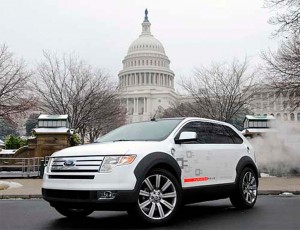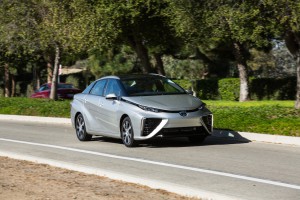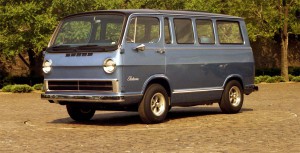Ford Motor Co. will get a $6 million grant from the U.S. Department of Energy to work on advanced fuel cell technology.
The suburban Detroit maker will share the grant with the Los Alamos National Laboratory as part of the latest push to bring hydrogen technology into the mainstream. Three Asian automakers are currently selling fuel-cell vehicles, or FCVs, in Southern California, but demand is limited due to the high cost of the technology and the lack of a broad refueling infrastructure.
“The grant will help further our research efforts to develop next-generation technologies for our vehicles,” Ford said in a statement.
First conceived in the 1850s, but only put to practical use in the 1960s, as part of NASA’s Apollo moon mission, fuel-cells combine hydrogen and oxygen to generate a flow of current that can be used to power the same motors found in an electric vehicle. Some experts refer to the technology as a “refillable battery.” The only byproduct is water vapor.
(GM fuel-cell system could power new Navy undersea research vessel. Click Here for the story.)
Hydrogen power gained a lot of attention in the early years of the new millennium, but then lost momentum as the industry’s focus shifted to battery power. Despite improvements in lithium-ion technology, skeptics contend that electric vehicles are too costly and limited in range to truly challenge the time-tested internal combustion engine.
Among the most vocal proponents is Toyota Motor Co. which recently started marketing its Mirai hydrogen car in Southern California. It joined the Hyundai Tucson Fuel-Cell Vehicle. Honda is just getting ready to launch its own FCV, the Clarity. All three will be offered through only a select few dealerships operating in communities nearby the handful of public hydrogen fueling stations now in operation.
But California regulators have created a fund meant to expand that network to at least 100 refueling stations by the end of the decade. Several other states are considering similar programs.
Several countries abroad are taking similar steps. Germany is aiming to establish a nationwide network of green energy stations that will feature both fast electric chargers and hydrogen pumps. South Korea is setting up hydrogen stations in time for the 2018 Winter Olympics, with Japan laying out similar plans for the 2020 Summer Olympics.
(Novel Nissan approach could solve problem of hydrogen availability. Click Here for the story.)
While the lack of a refueling network is considered the most serious challenge to widespread adoption of hydrogen power, there are other issues to address, most notable cost, size and power.
The Mirai, for example, has a base price of $58,000 before federal and state tax credits. A lease runs around $600 a month. That’s similar to what the other two models will be going for, though Hyundai set a precedent when it hit the market first, announcing buyers would not have to pay for fuel.
When the first hydrogen prototype vehicle was debuted by General Motors four decades ago, the fuel-cell technology required filled most of a large van. Today, fuel-cell stacks are coming down in size and are approaching that of a conventional gas engine – and they are lighter and smaller than the batteries used in a vehicle like the Tesla Model S.
But significant work is needed before they can become truly competitive with gas and diesel vehicles, experts caution, and even some green-minded industry officials are skeptical about their long-term appeal. Tesla CEO Elon Musk likes to refer to them as “fool cells.”
Overcoming the challenges of fuel-cell technology will be critical, and it needs to be done quickly, as developments in battery power are coming fast, said Ben Scott a senior IHS analyst. “This could be a ‘now or never’ situation for FCEVs (fuel-cell electric vehicles) in mass market mobility.”
The consultancy recently issued a study predicting there will be at least 17 new fuel-cell vehicles introduced over the next decade. Even then, it predicted sales will remain niche, about 0.1% of total global automotive production, or barely 70,000 fuel-cell vehicles annually.
The real test of the technology will take about 25 to 30 years, according to IHS. If consumers haven’t embraced hydrogen by then it could fade away or remain in use only in select niches.
(Mercedes-Benz set to join ranks of makers offering fuel-cell vehicles. Click Here for the latest.)



